Abstract
Infant mice have been shown previously to be a useful model for the study of gastrointestinal (GI) and systemic candidosis. In this study, the virulence of four strains of Candida albicans was compared in intragastrically inoculated infants and in adult mice inoculated intravenously. The four strains differed in their ability to kill both infant and adult mice. A smaller inoculum was required to kill adult mice inoculated intravenously. Neonates could not be inoculated intravenously. The ability of the strains to spread systemically from and to persist for long periods of time in the digestive tract was also examined in intragastrically inoculated infants. The yeast cells spread to liver, lungs, kidneys, and spleen within 30 min postinoculation. Yeast were not detectable in the lungs or in blood from the pleural cavity up to 15 min post-inoculation, thus making it unlikely that systemic spread resulted from faulty inoculation or from aspiration. The region where C. albicans crossed the GI tract of infant mice was visualized histologically in the upper third of the small intestine. The four strains varied in their ability to persist for long periods in the GI tract, in the rate at which they appeared systemically, and in ability to kill infant mice. Three of the four strains colonized the gut for up to 10 weeks postinoculation without use of any compromising agents.
Full text
PDF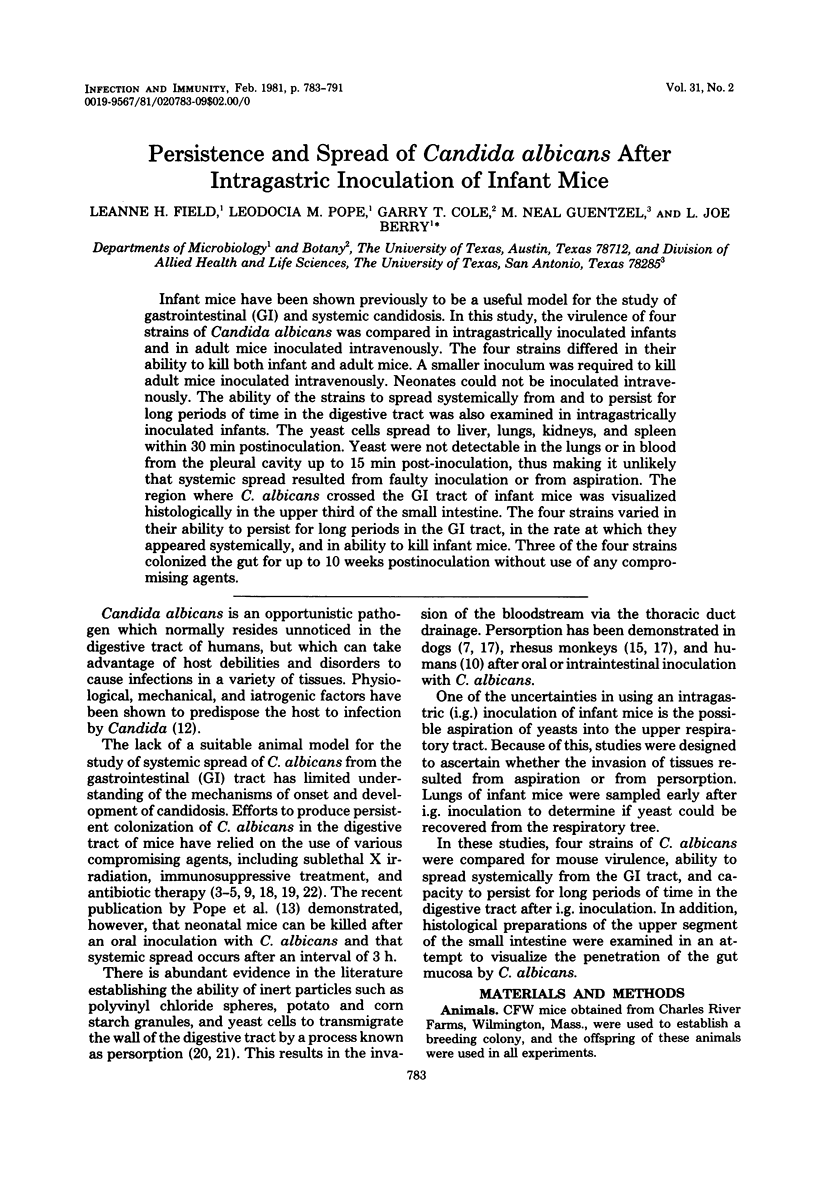
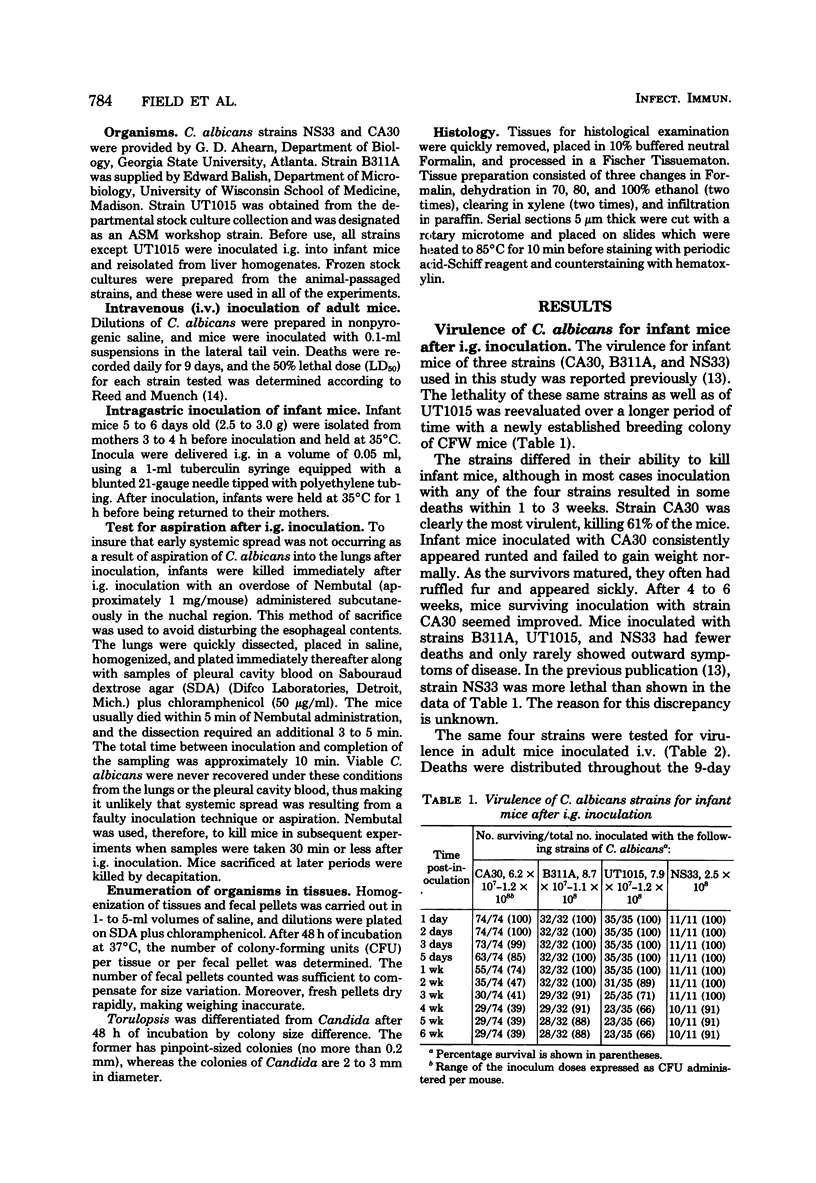
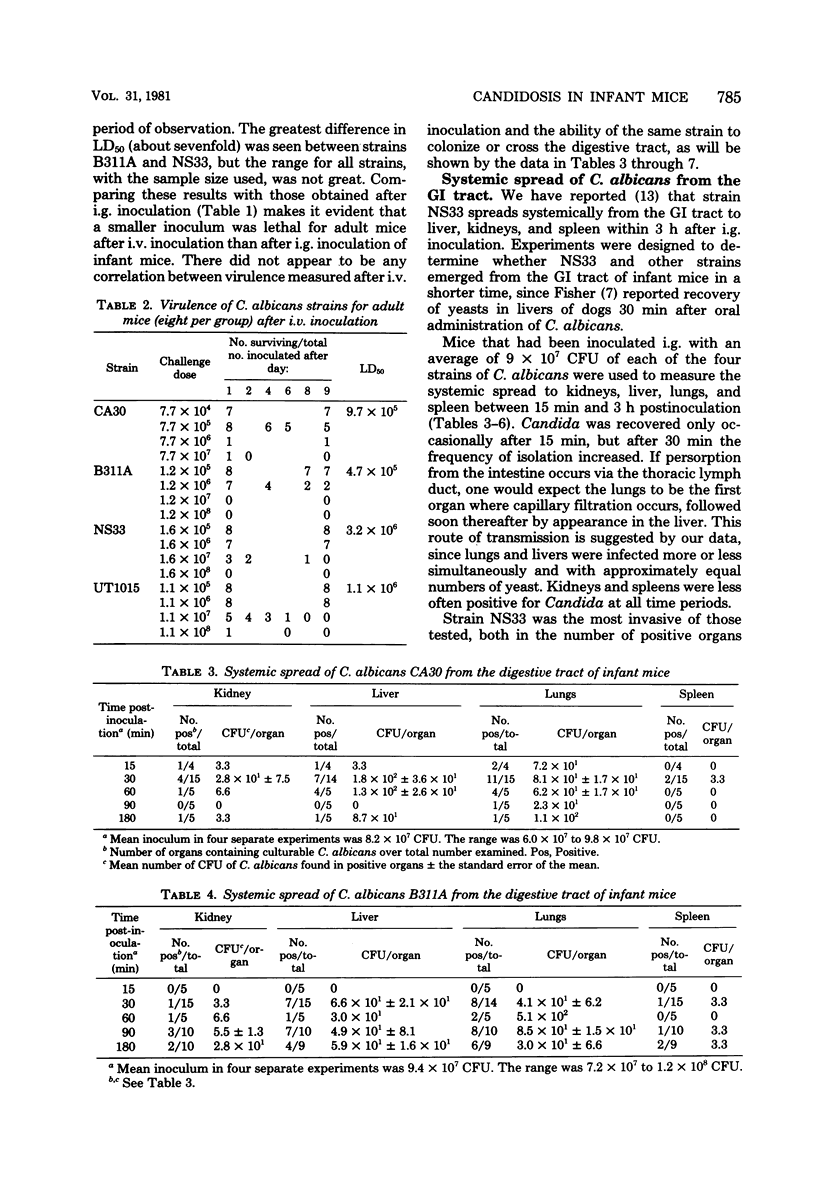
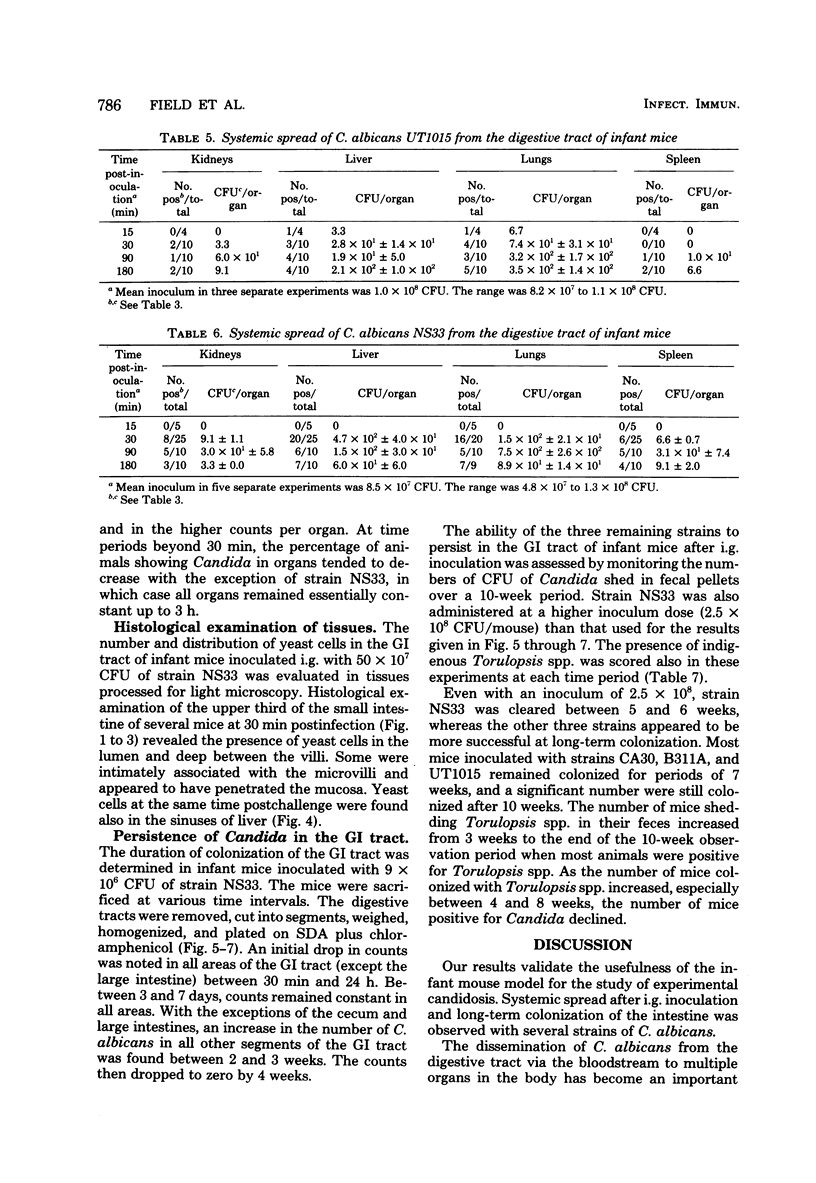
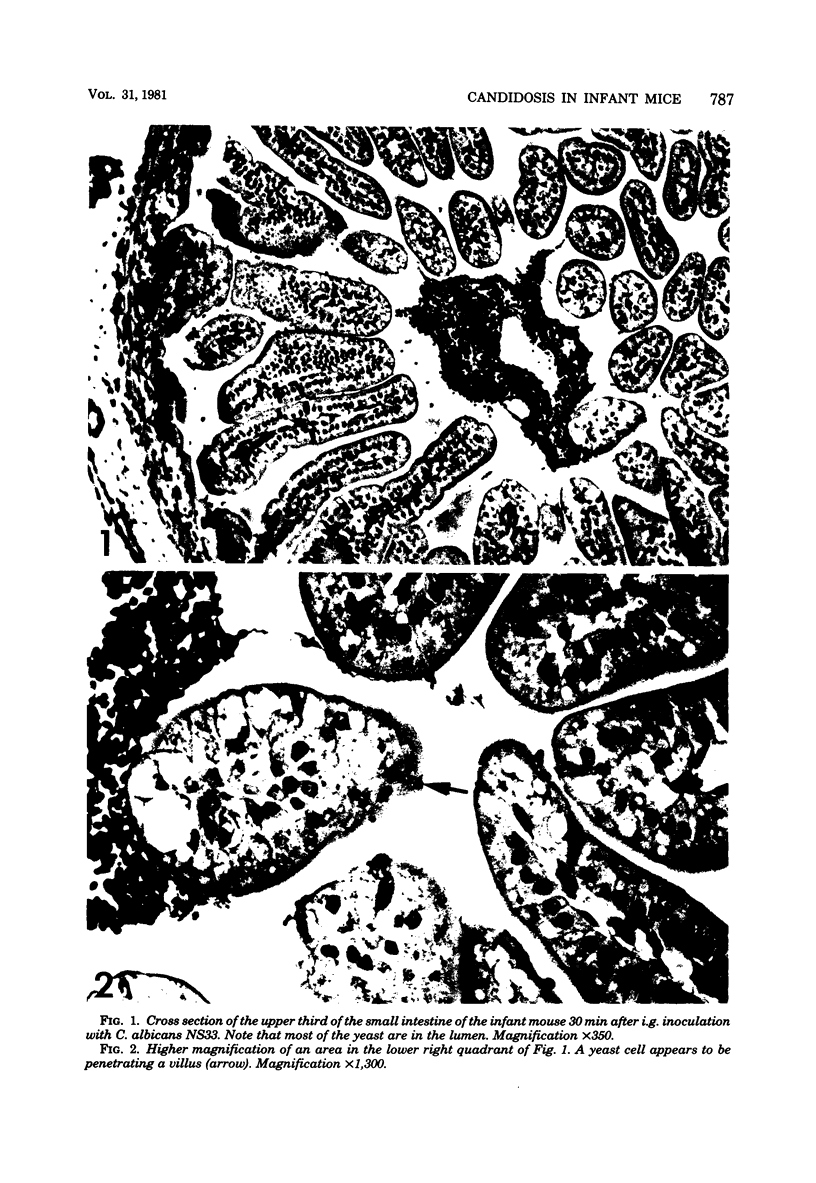
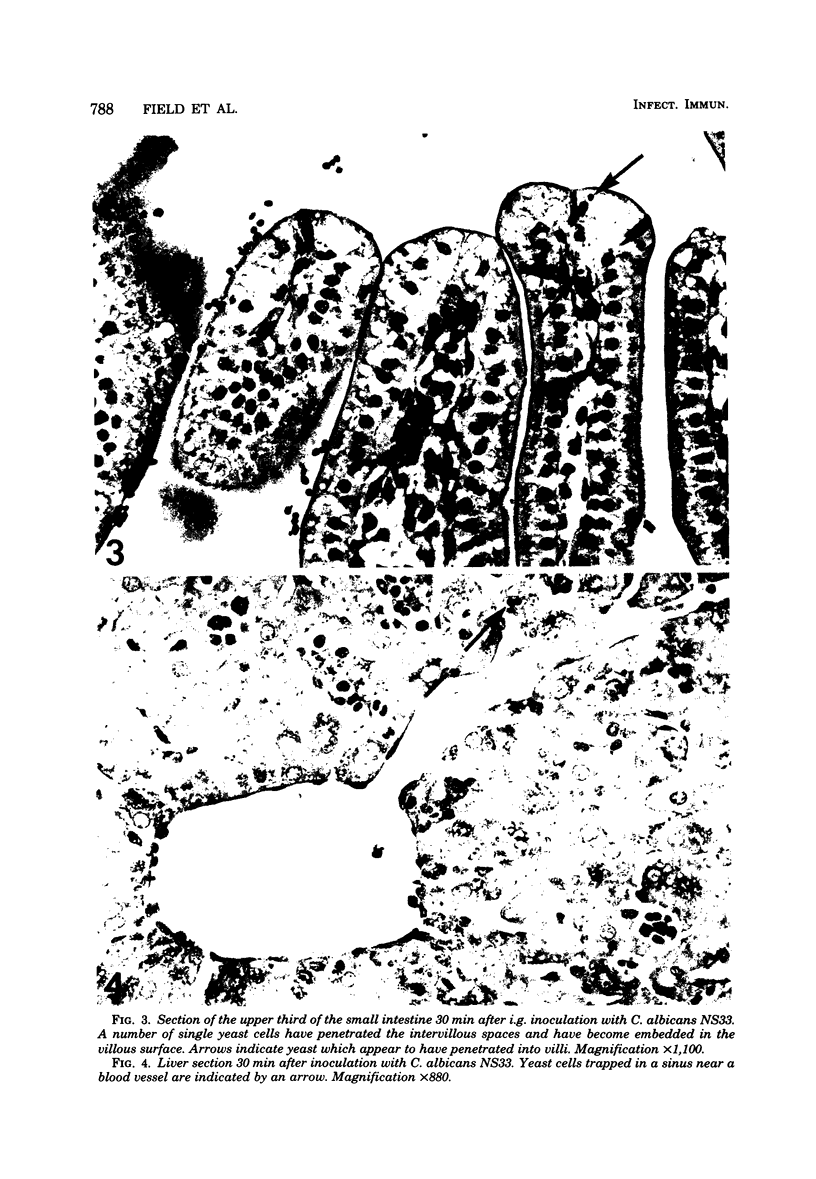
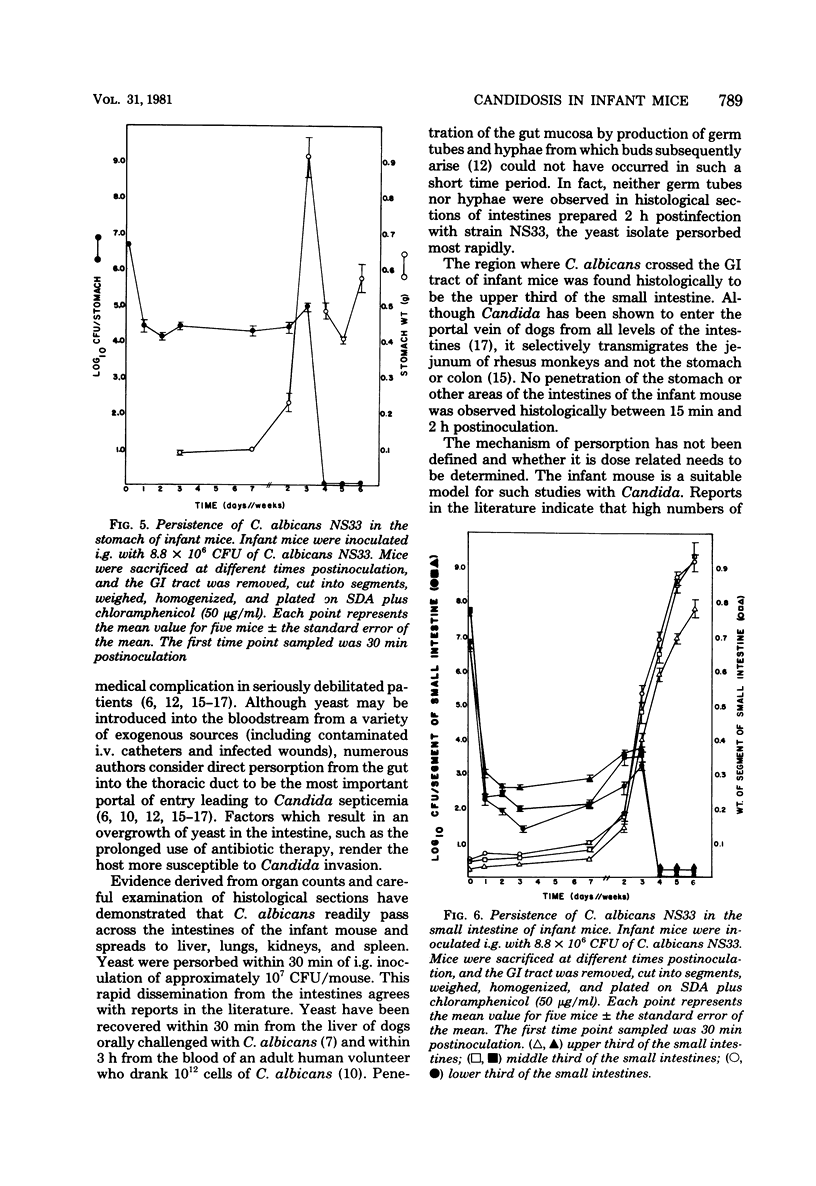
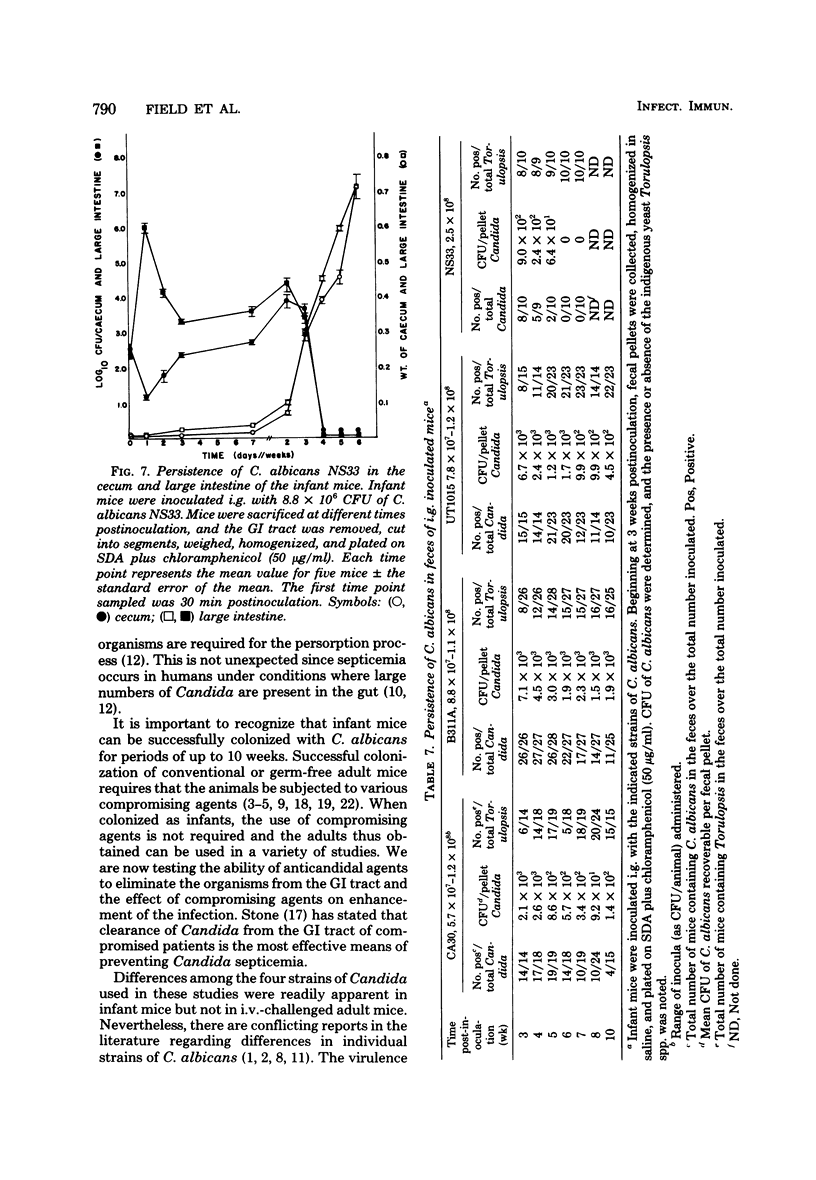
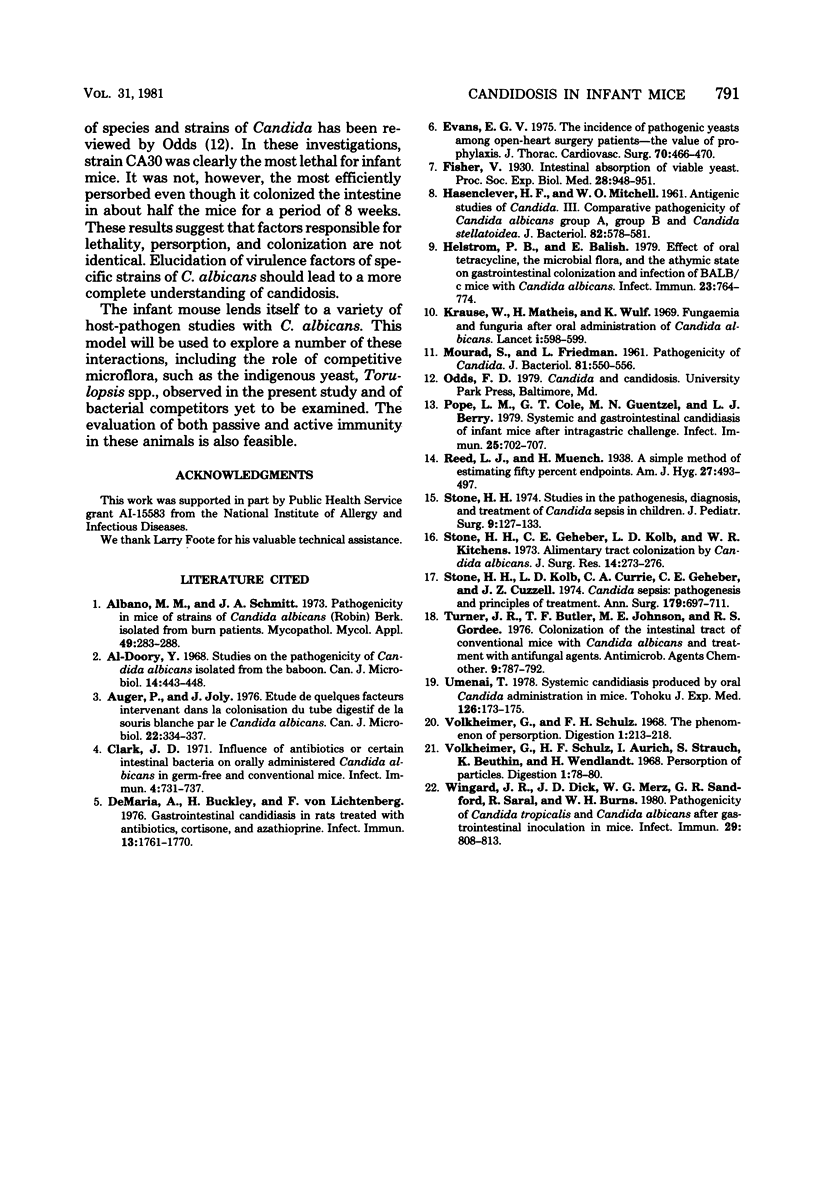
Images in this article
Selected References
These references are in PubMed. This may not be the complete list of references from this article.
- Albano M. M., Schmitt J. A. Pathogenicity in mice of strains of Candida albicans (Robin) Berk. isolated from burn patients. Mycopathol Mycol Appl. 1973 Apr 30;49(4):283–288. doi: 10.1007/BF02050722. [DOI] [PubMed] [Google Scholar]
- Auger P., Joly J. Etude de quelques facteurs intervenant dans la colonisation du tube digestif de la souris blanche par le Candida albicans. Can J Microbiol. 1976 Mar;22(3):334–337. [PubMed] [Google Scholar]
- Clark J. D. Influence of antibiotics or certain intestinal bacteria on orally administered Candida albicans in germ-free and conventional mice. Infect Immun. 1971 Dec;4(6):731–737. doi: 10.1128/iai.4.6.731-737.1971. [DOI] [PMC free article] [PubMed] [Google Scholar]
- DeMaria A., Buckley H., von Lichtenberg F. Gastrointestinal candidiasis in rats treated with antibiotics, cortisone, and azathioprine. Infect Immun. 1976 Jun;13(6):1761–1770. doi: 10.1128/iai.13.6.1761-1770.1976. [DOI] [PMC free article] [PubMed] [Google Scholar]
- Evans E. G. The incidence of pathogenic yeasts among open-heart surgery patients-the value of prophylaxis. J Thorac Cardiovasc Surg. 1975 Sep;70(3):466–470. [PubMed] [Google Scholar]
- HASENCLEVER H. F., MITCHELL W. O. Antigenic studies of Candida. III. Comparative pathogenicity of Candida albicans group A, group B, and Candida stellatoidea. J Bacteriol. 1961 Oct;82:578–581. doi: 10.1128/jb.82.4.578-581.1961. [DOI] [PMC free article] [PubMed] [Google Scholar]
- Helstrom P. B., Balish E. Effect of oral tetracycline, the microbial flora, and the athymic state on gastrointestinal colonization and infection of BALB/c mice with Candida albicans. Infect Immun. 1979 Mar;23(3):764–774. doi: 10.1128/iai.23.3.764-774.1979. [DOI] [PMC free article] [PubMed] [Google Scholar]
- Krause W., Matheis H., Wulf K. Fungaemia and funguria after oral administration of Candida albicans. Lancet. 1969 Mar 22;1(7595):598–599. doi: 10.1016/s0140-6736(69)91534-7. [DOI] [PubMed] [Google Scholar]
- MOURAD S., FRIEDMAN L. Pathogenicity of Candida. J Bacteriol. 1961 Apr;81:550–556. doi: 10.1128/jb.81.4.550-556.1961. [DOI] [PMC free article] [PubMed] [Google Scholar]
- Pope L. M., Cole G. T., Guentzel M. N., Berry L. J. Systemic and gastrointestinal candidiasis of infant mice after intragastric challenge. Infect Immun. 1979 Aug;25(2):702–707. doi: 10.1128/iai.25.2.702-707.1979. [DOI] [PMC free article] [PubMed] [Google Scholar]
- Stone H. H., Geheber C. E., Kolb L. D., Kitchens W. R. Alimentary tract colonization by Candida albicans. J Surg Res. 1973 Apr;14(4):273–276. doi: 10.1016/0022-4804(73)90028-0. [DOI] [PubMed] [Google Scholar]
- Stone H. H., Kolb L. D., Currie C. A., Geheber C. E., Cuzzell J. Z. Candida sepsis: pathogenesis and principles of treatments. Ann Surg. 1974 May;179(5):697–711. doi: 10.1097/00000658-197405000-00024. [DOI] [PMC free article] [PubMed] [Google Scholar]
- Stone H. H. Studies in the pathogenesis, diagnosis, and treatment of Candida sepsis in children. J Pediatr Surg. 1974 Feb;9(1):127–133. doi: 10.1016/0022-3468(74)90019-0. [DOI] [PubMed] [Google Scholar]
- Turner J. R., Butler T. F., Johnson M. E., Gordee R. S. Colonization of the intestinal tract of conventional mice with Candida albicans and treatment with antifungal agents. Antimicrob Agents Chemother. 1976 May;9(5):787–792. doi: 10.1128/aac.9.5.787. [DOI] [PMC free article] [PubMed] [Google Scholar]
- Umenai T. Systemic candidiasis produced by oral Candida administration in mice. Tohoku J Exp Med. 1978 Oct;126(2):173–175. doi: 10.1620/tjem.126.173. [DOI] [PubMed] [Google Scholar]
- Volkheimer G., Schulz F. H., Aurich I., Strauch S., Beuthin K., Wendlandt H. Persorption of particles. Digestion. 1968;1(2):78–80. doi: 10.1159/000196836. [DOI] [PubMed] [Google Scholar]
- Volkheimer G., Schulz F. H. The phenomenon of persorption. Digestion. 1968;1(4):213–218. doi: 10.1159/000196856. [DOI] [PubMed] [Google Scholar]
- Wingard J. R., Dick J. D., Merz W. G., Sandford G. R., Saral R., Burns W. H. Pathogenicity of Candida tropicalis and Candida albicans after gastrointestinal inoculation in mice. Infect Immun. 1980 Aug;29(2):808–813. doi: 10.1128/iai.29.2.808-813.1980. [DOI] [PMC free article] [PubMed] [Google Scholar]
- al-Doory Y. Studies on the pathogenicity of Candida albicans isolated from baboon. Can J Microbiol. 1968 Apr;14(4):443–448. doi: 10.1139/m68-070. [DOI] [PubMed] [Google Scholar]






